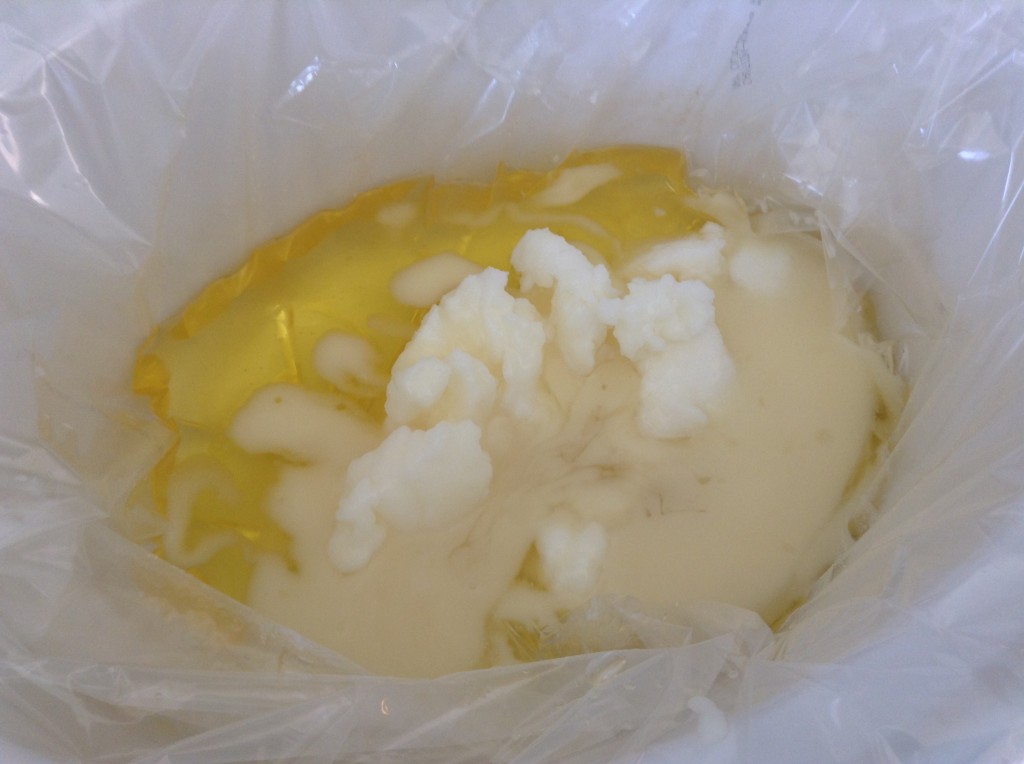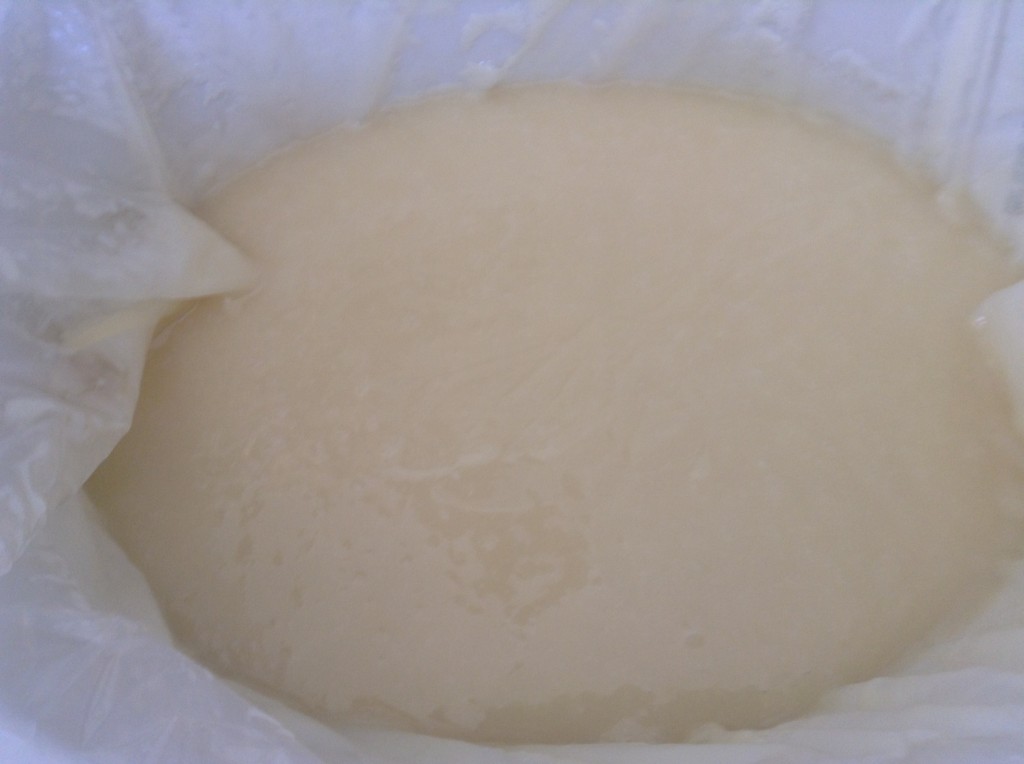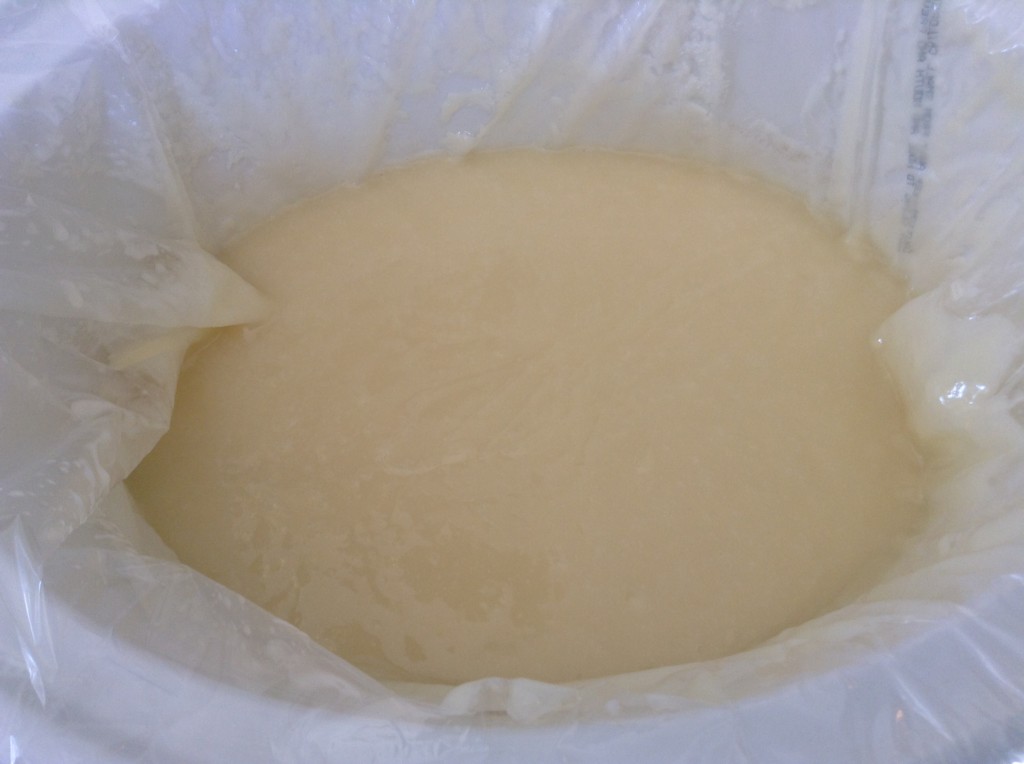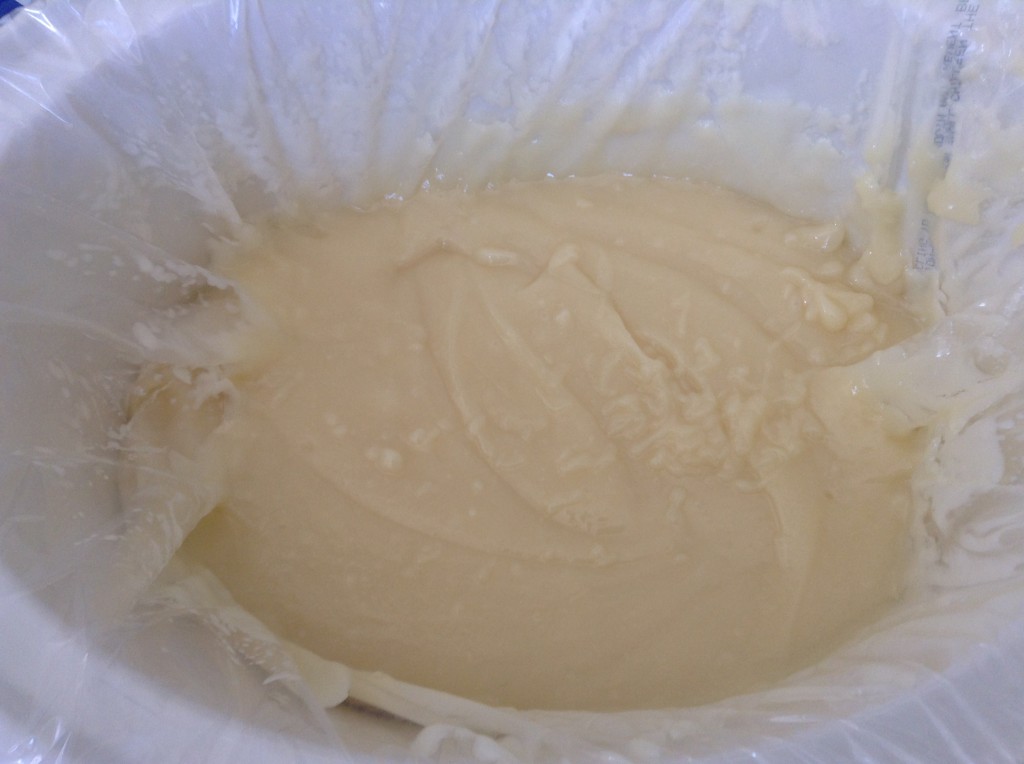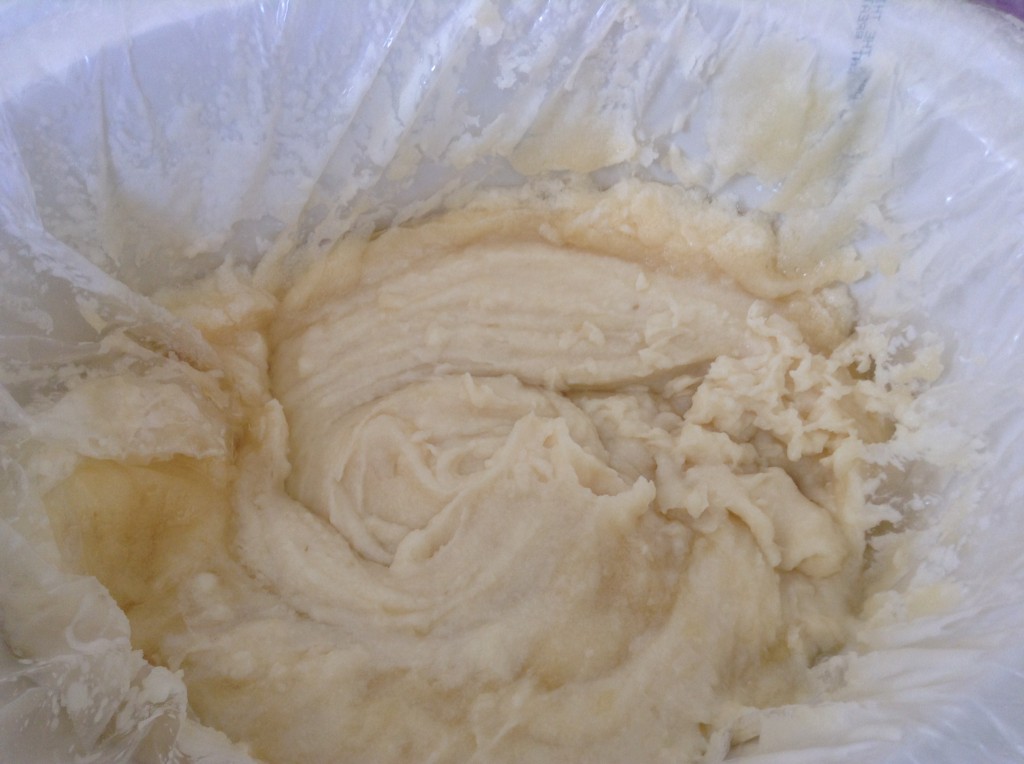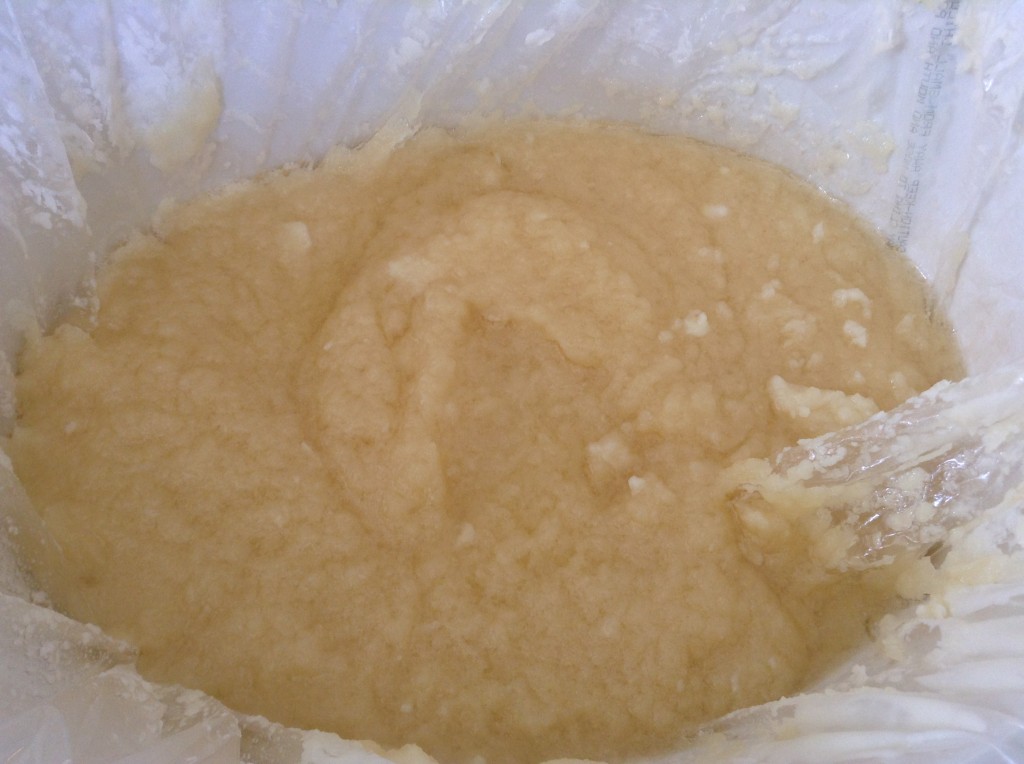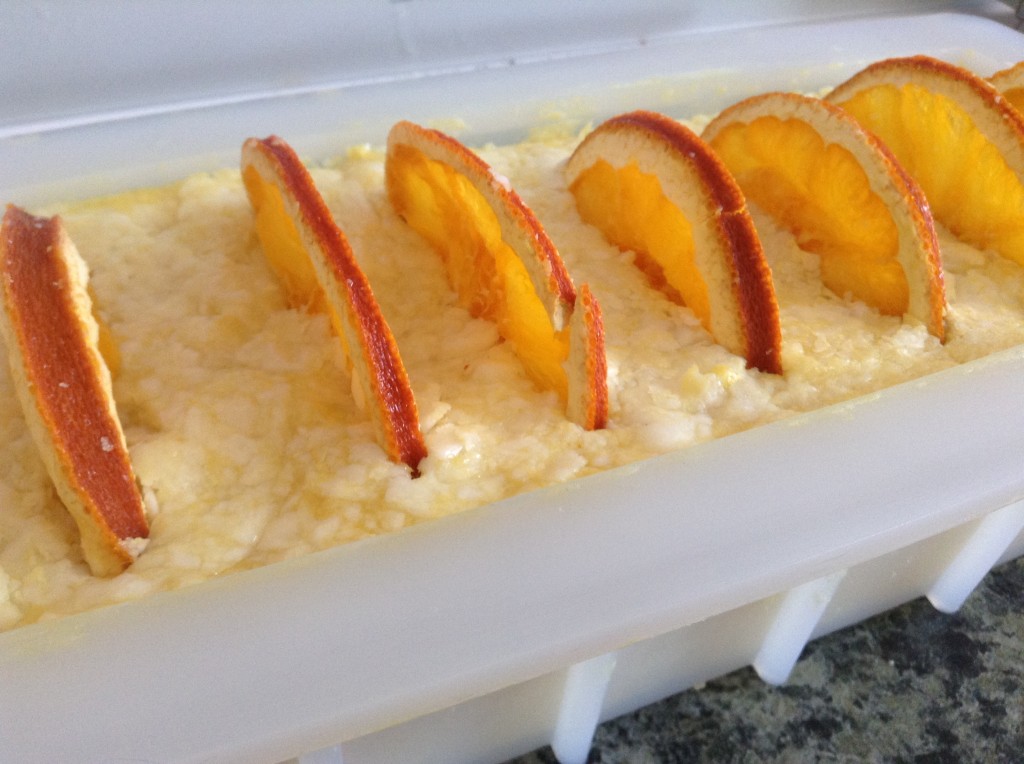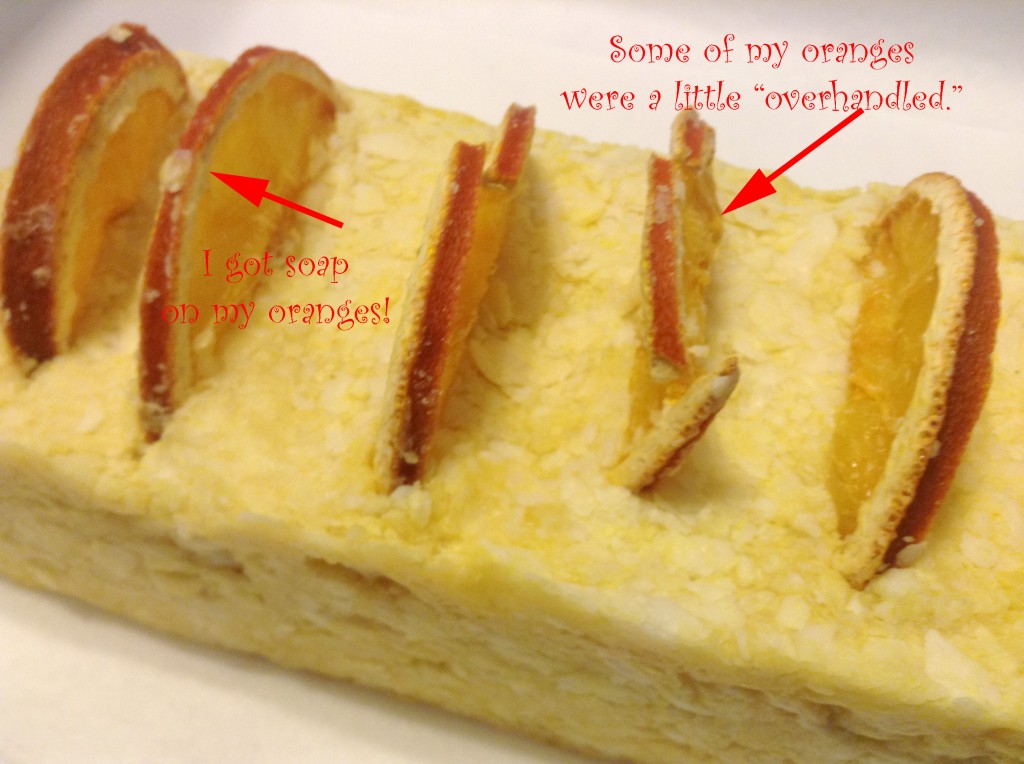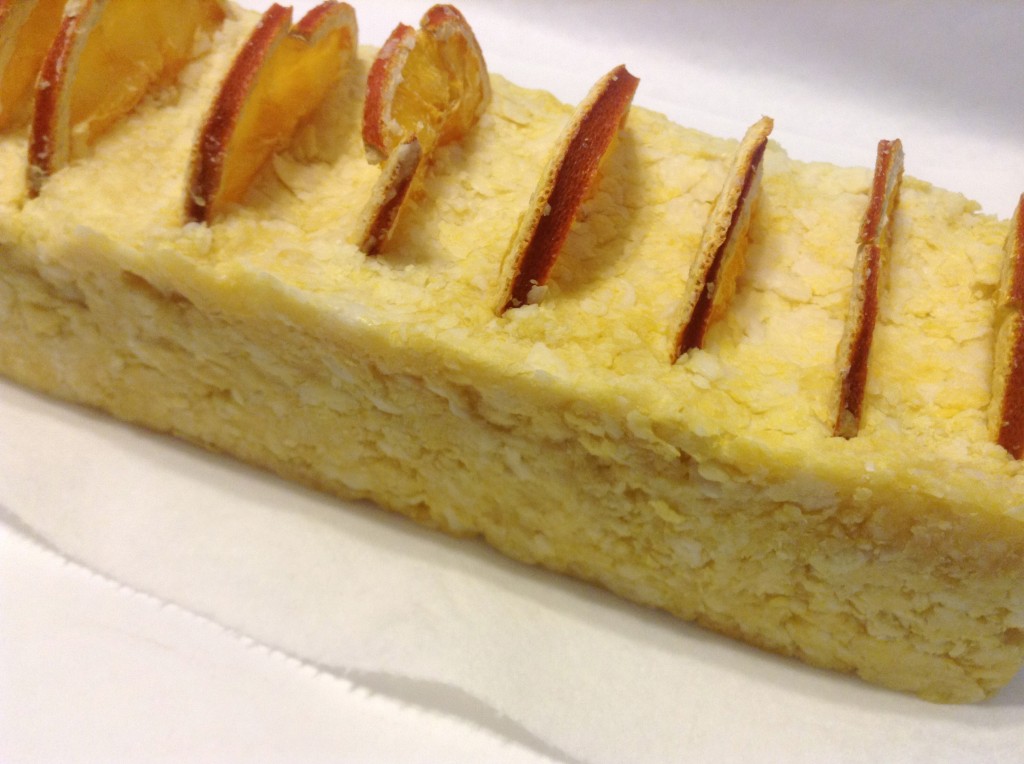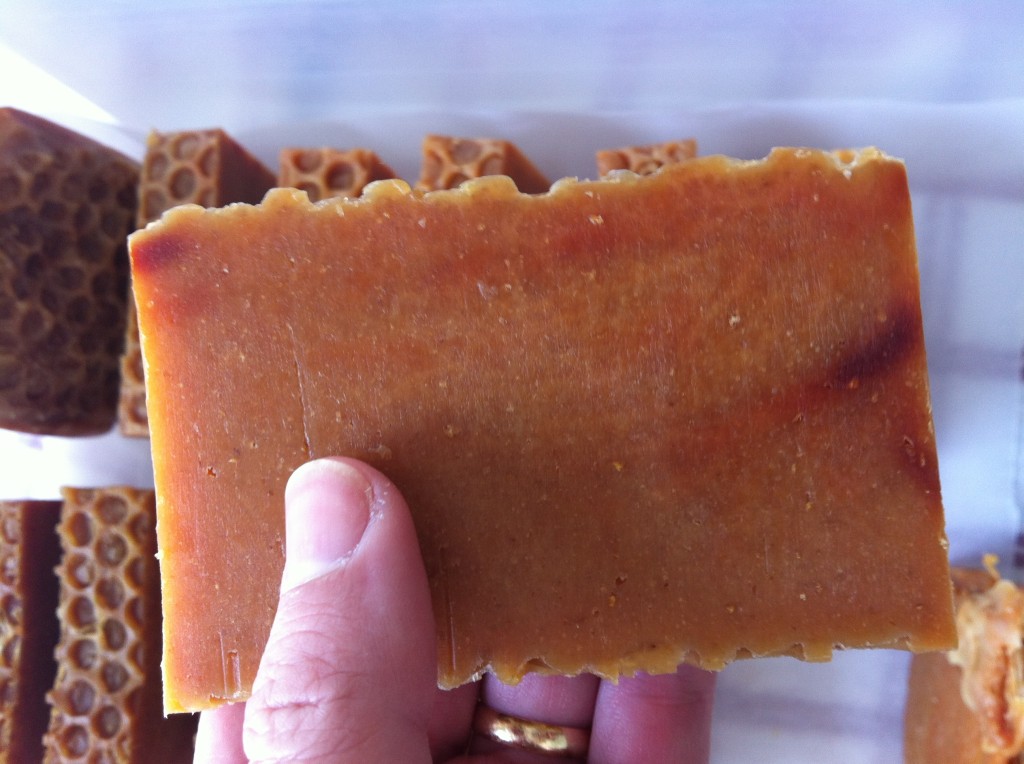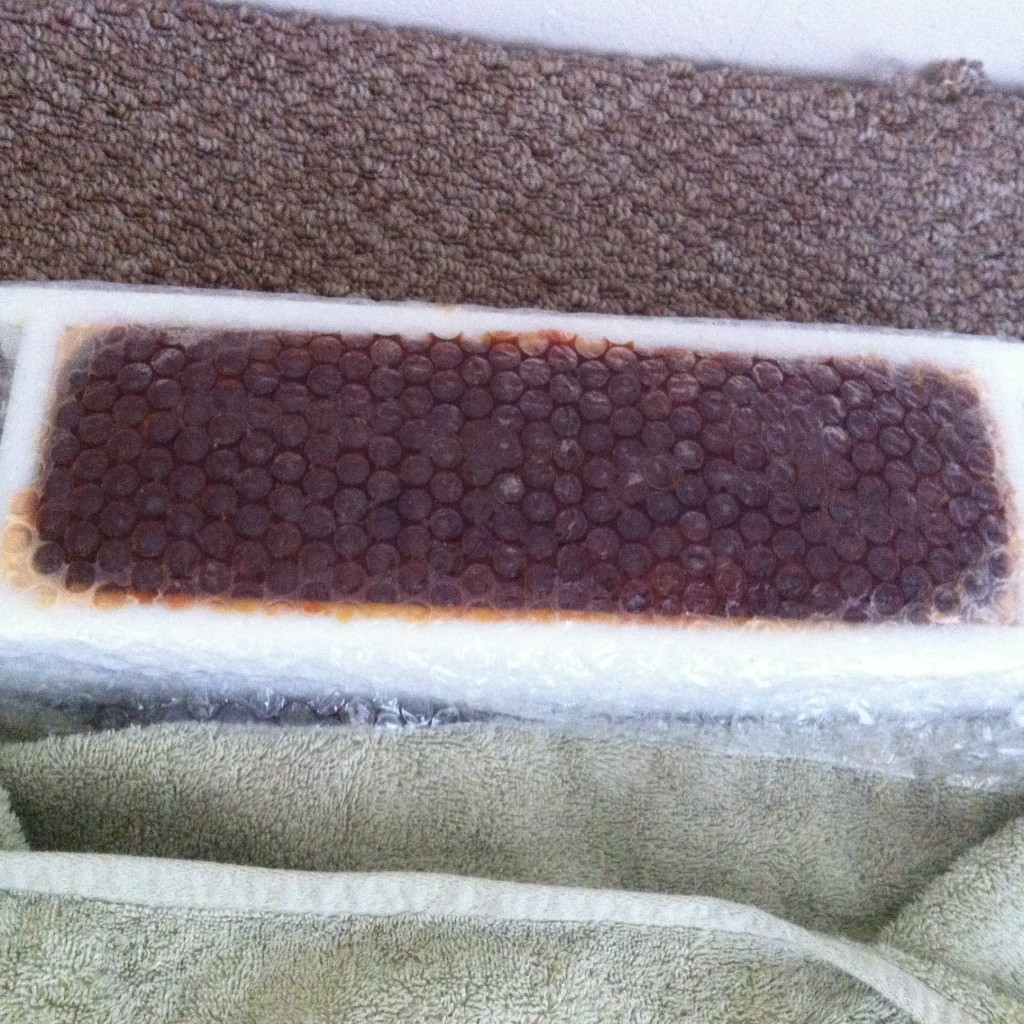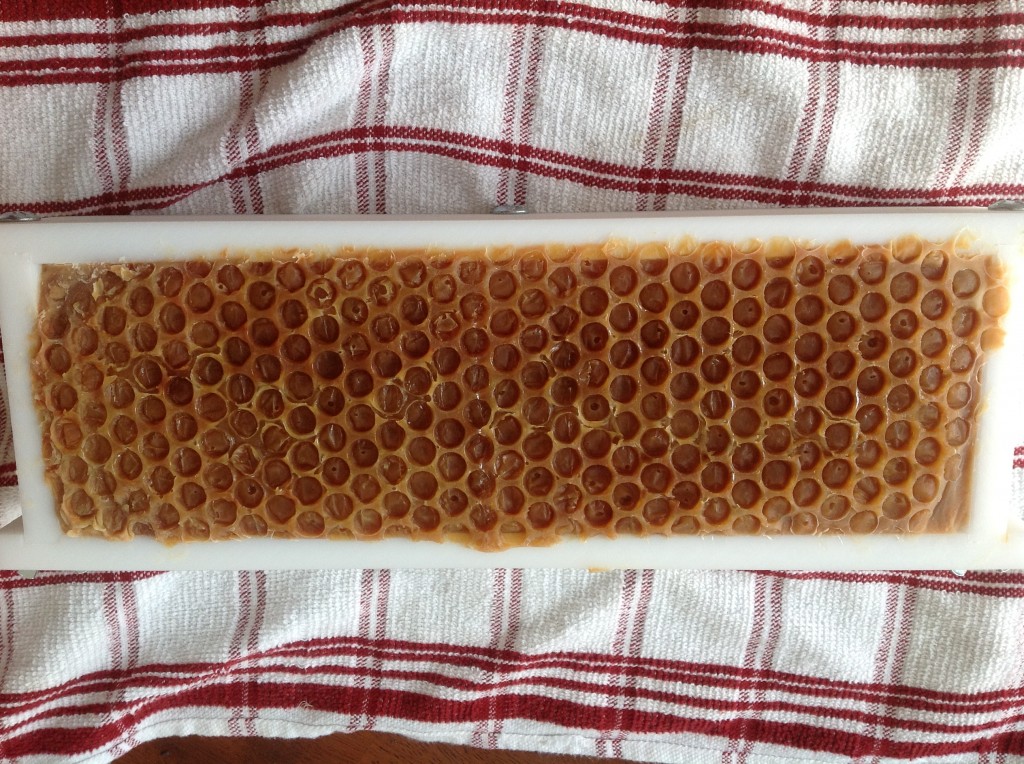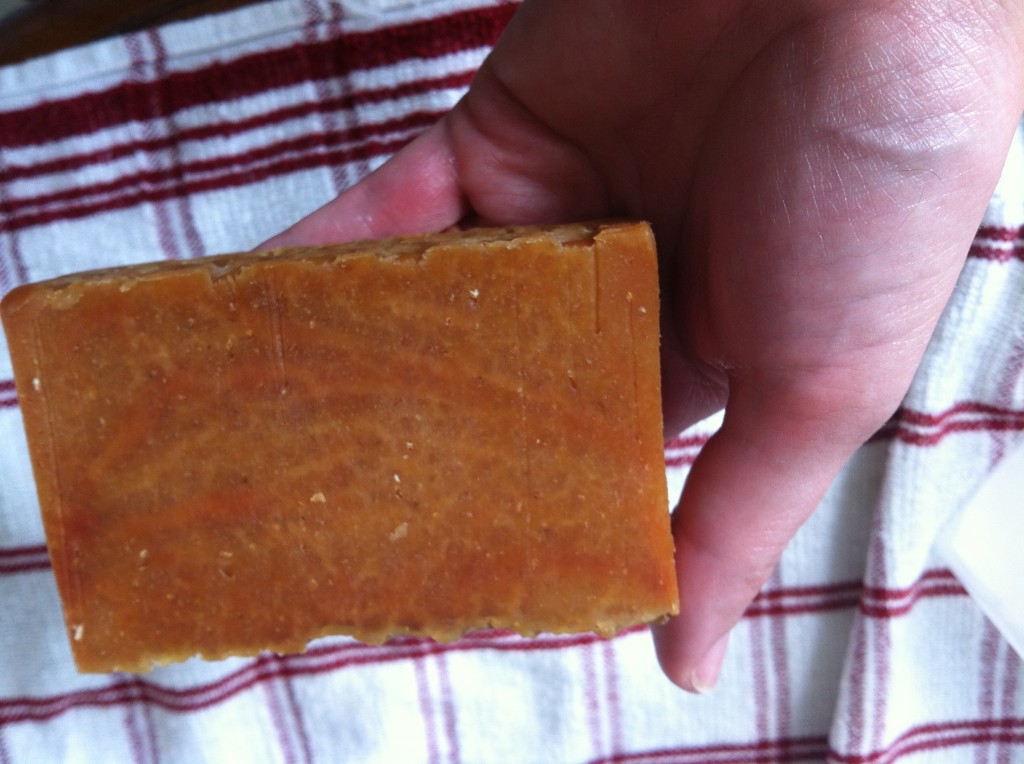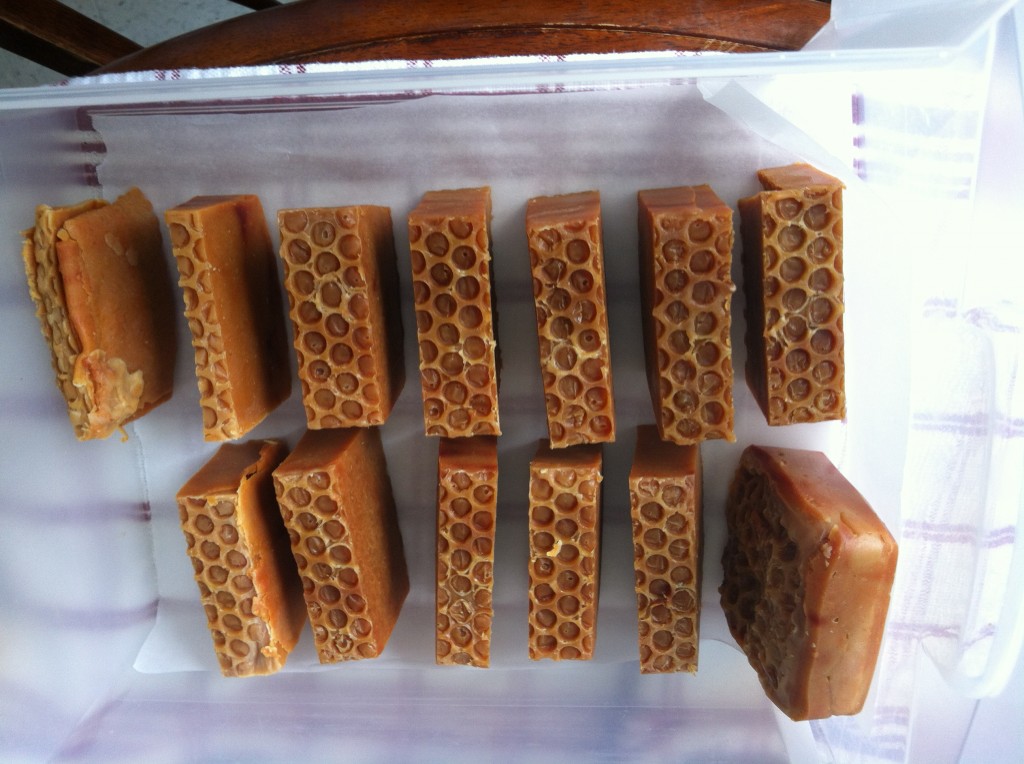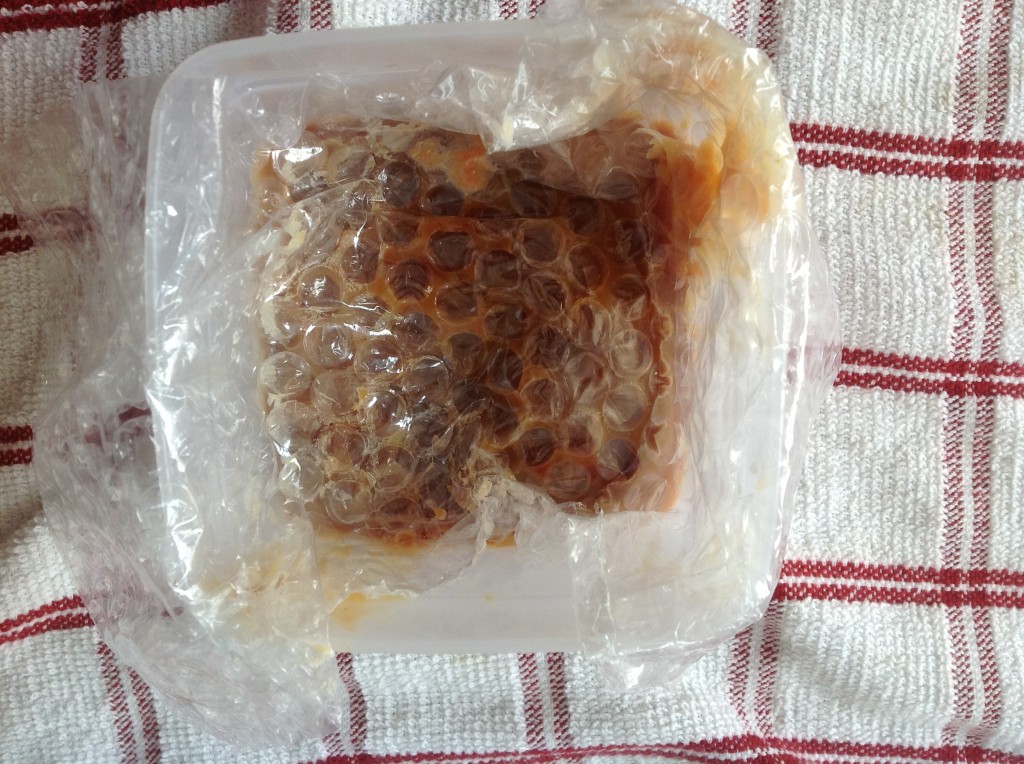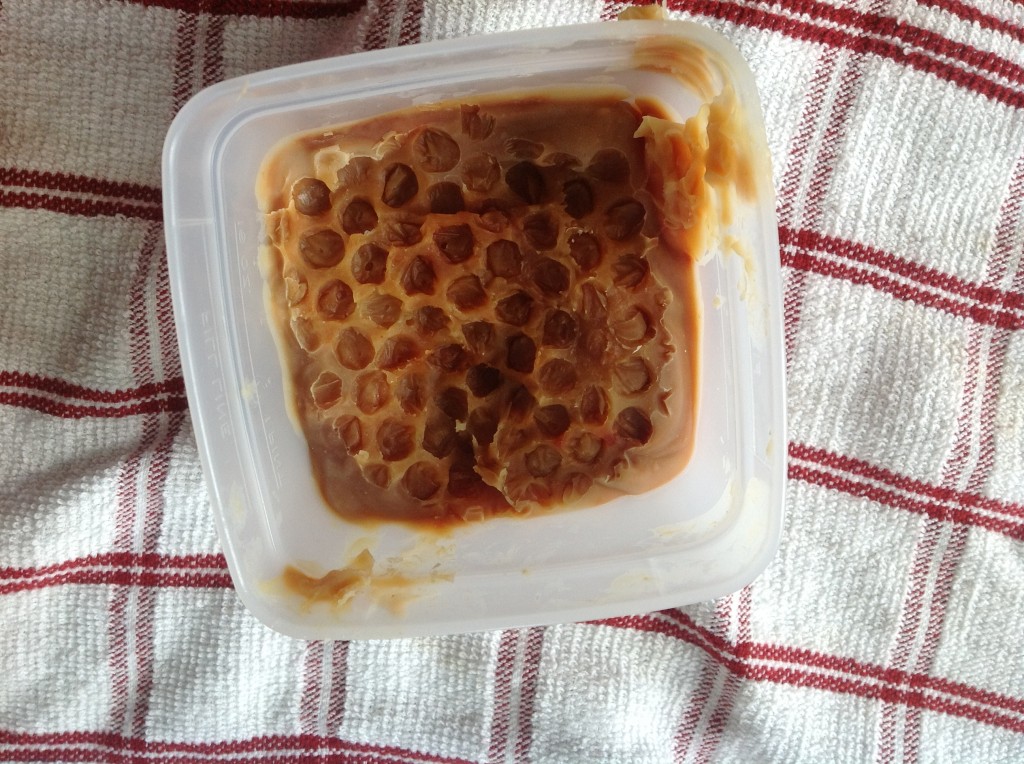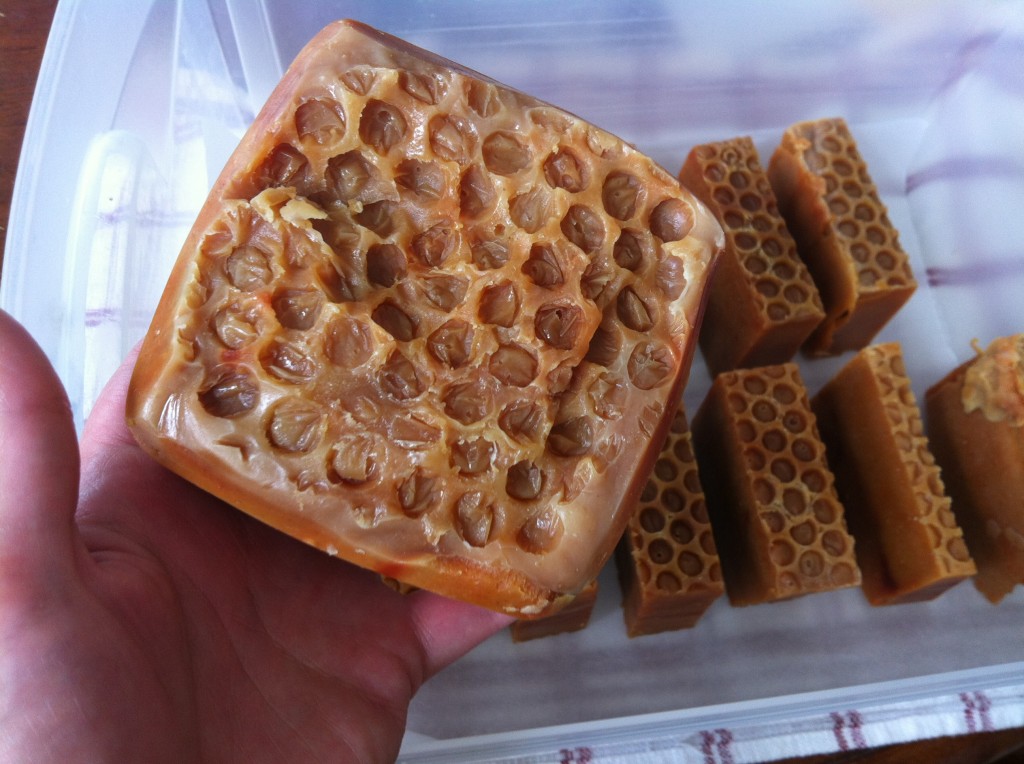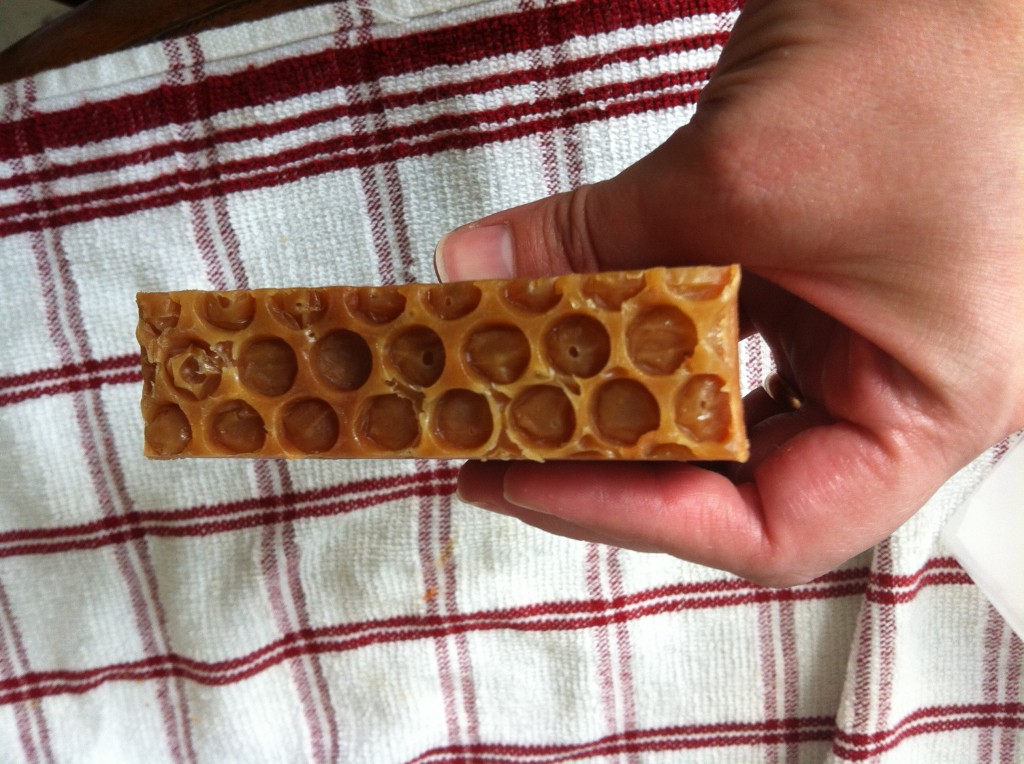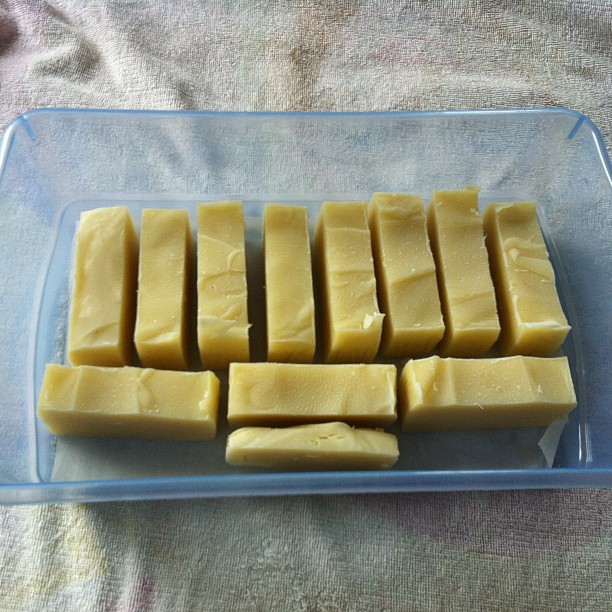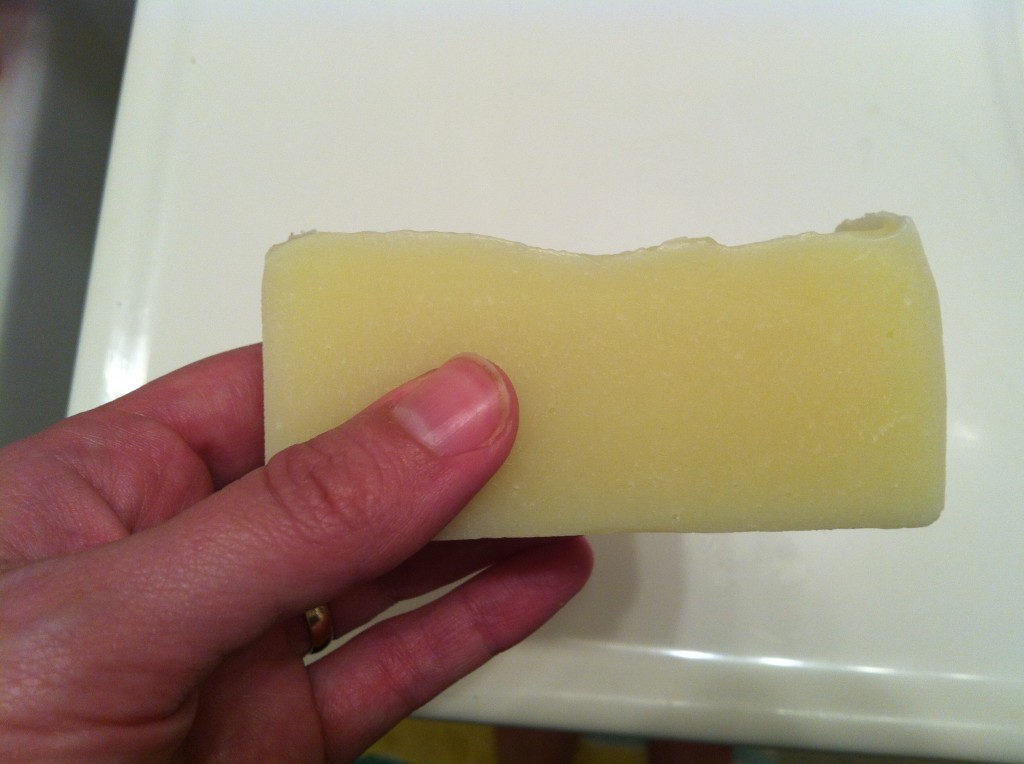I have very little experience with hot process soap, but I really wanted to give it a try. I think the rustic look of some hot process soaps is quite pretty. I had an idea for a soap, and I thought it might look better if it were hot process rather than cold process, so I decided to give it go.
First, my recipe:
- 40% olive oil
- 25% coconut oil
- 25% palm oil
- 5% castor oil.
This is my “test” recipe, which also has the advantage of being a good basic recipe.
I made up the lye mixture with full water and set it aside. Then I added the oils to the crock pot.
I grew really impatient waiting for them to melt. They probably took about 15 minutes to melt on high heat.
Then I added my lye. I thought I was being really smart lining my crock pot. I forgot about the stick blender blades. Still, very little of the soap leaked into the crock pot itself. Next time, I just won’t bother. After all, with hot process, the soap is fully saponified, so the lye is not going to be a problem. I didn’t add my fragrance to the soap while it was in the crock pot, so there was no danger of fragrance leeching into my food later.
I blended to light trace. It took maybe a few seconds. You can barely see the soap trails on the top.
Next, I stirred it a bit before letting it sit to cook. At this point, I turned the crock pot to low. Notice you can see a bit of the separation you are supposed to look for.
I let it cook for a bit, perhaps 10 minutes, and when I came to check on it, it was thickening up quite a bit. At this state, it was maybe the texture of thick pudding or mashed potatoes.
I actually checked on it quite often. I was nervous about leaving it alone. I should have paid better attention to timing here, but since I was checking it so frequently, I really looked more for “signs” instead of watching the clock. I started to notice it was gelling near the edges, like it was supposed to do.
So, I stirred it up, and the gelled soap combined with the soap in the middle looked more like applesauce.
I cooked it a bit longer, looking for signs it was turning fluffy. Sure enough, I started to see the fluffy stage.
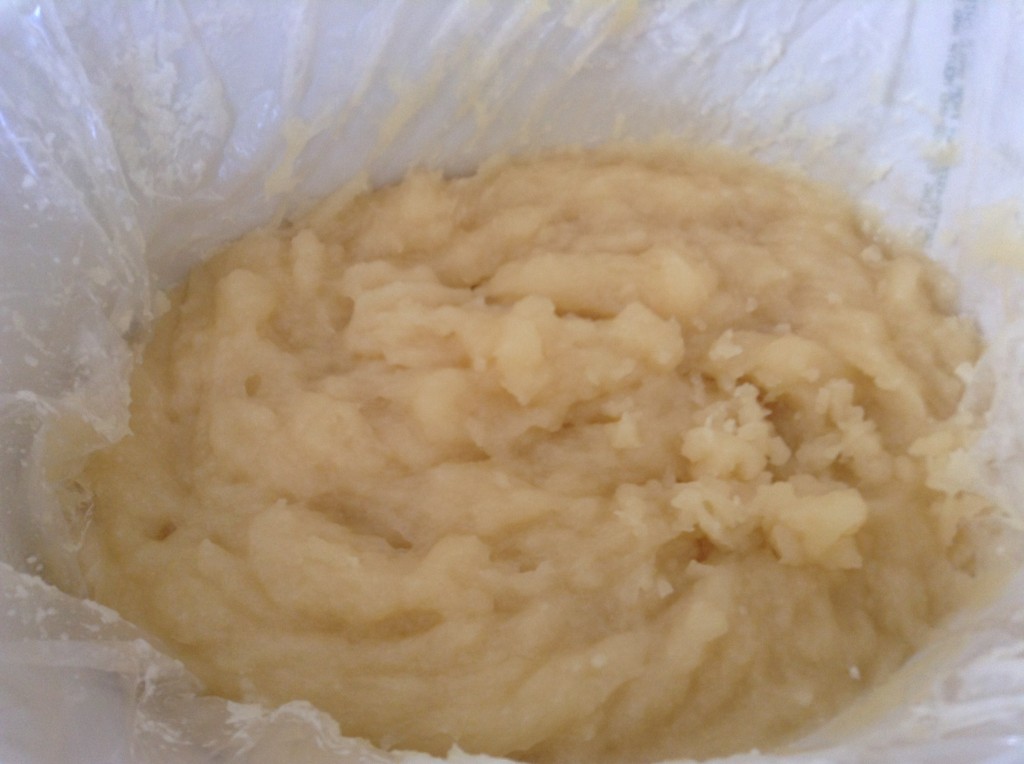 Then when it started to pull away from the edges, I did a zap test. It wasn’t quite done yet, so I let it cook a bit longer and did a second zap test. This time, no zap.
Then when it started to pull away from the edges, I did a zap test. It wasn’t quite done yet, so I let it cook a bit longer and did a second zap test. This time, no zap.
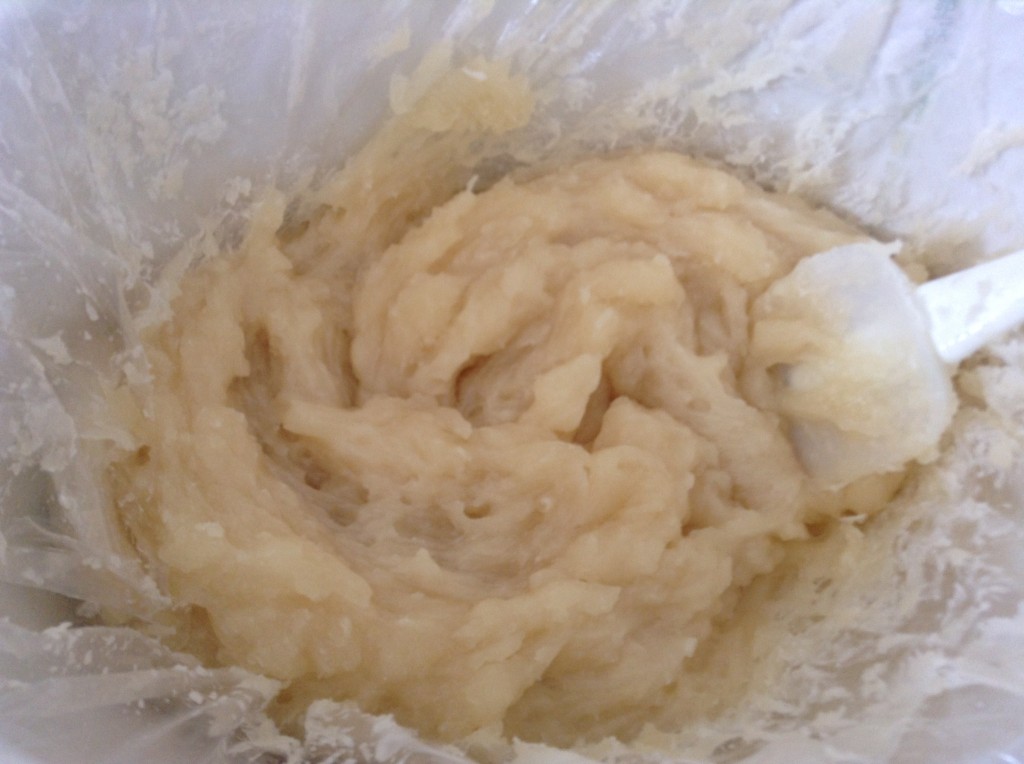 I scooped the soap out of the crock pot and put it into a bowl. This is where I think I could use some advice from more experienced hot process soapmakers. I wanted to let the soap cool a bit so it didn’t burn off the delicate orange essential oil I wanted to use (though, to be fair, it was 10x orange oil).
I scooped the soap out of the crock pot and put it into a bowl. This is where I think I could use some advice from more experienced hot process soapmakers. I wanted to let the soap cool a bit so it didn’t burn off the delicate orange essential oil I wanted to use (though, to be fair, it was 10x orange oil).
I think I let it cool too much. I read at TeachSoap that it’s a good idea to add a bit of sunflower oil (or, I suppose another carrier oil) to help cool the soap and make it more pliable as I mix the fragrance. Do any of you do this? Does it work? Because I tried to wait until my soap was right around the flashpoint for orange essential oil, and I think it was too cool. I had some trouble getting it into the mold, which I understand is just part of the nature of hot process soap, but I am wondering if the oil would have helped. Any advice is appreciated.
I added the orange essential oil, and it was very hard to mix. My soap is going to have a really cool mottled look because I couldn’t get the oil to mix as thoroughly as I had planned.
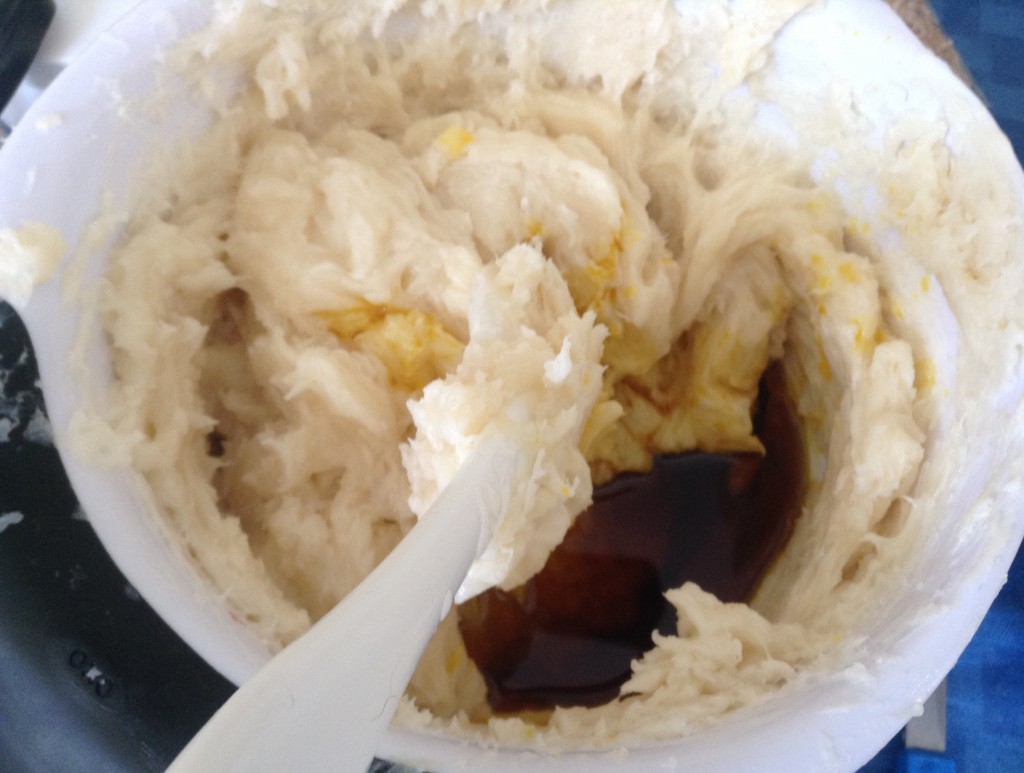 After I mixed the oil, I plopped it in the mold, and tried to stop fiddling with it, but I wasn’t successful.
After I mixed the oil, I plopped it in the mold, and tried to stop fiddling with it, but I wasn’t successful.
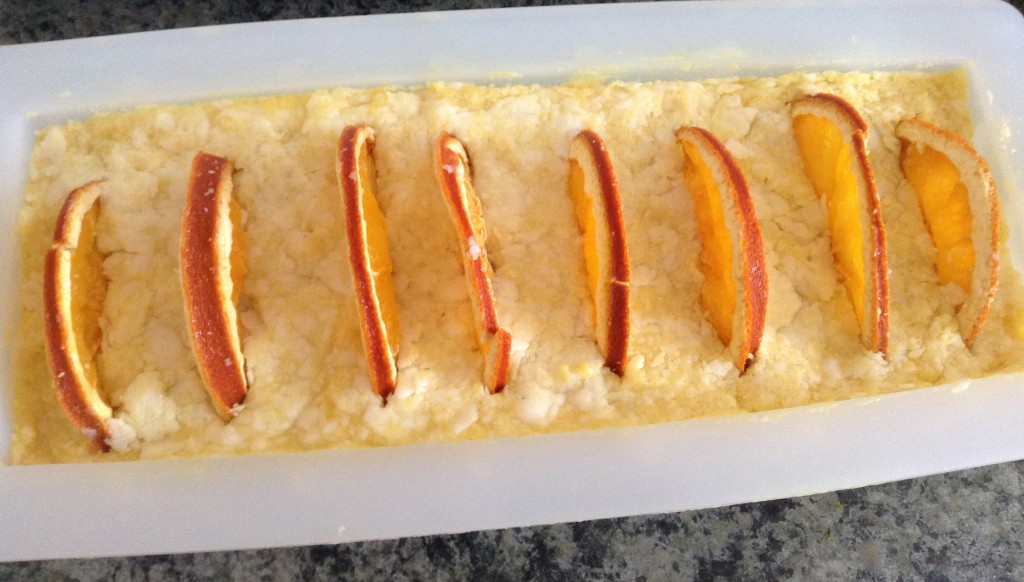 As you can see, I put some dried orange slices in the tops of the bars. Pretty!
As you can see, I put some dried orange slices in the tops of the bars. Pretty!
Here is another view of the soap in the mold.
Eventually, I quit fussing with it and let it set up. I unmolded it and decided to let it harden a bit more before I cut it. You can tell I fussed with it too much because I got soap all over my oranges. Boo! I decided to clean them off after I cut the soap. The pictures are a little darker because the light wasn’t as good by the evening when I took them.
Here is another view of the soap loaf with the manhandled (womanhandled?) oranges in clear view.
I am really digging the mottled look. It made me wonder if this is how Gossage’s soap got its famous “mottled” look. I know they experimented with adding colorants, but I couldn’t find out if their manufacturing process was hot process or not. I can’t find a picture of Gossage’s soap (just the packaging), so I’m not really sure what it looked like.
After the soap was cooled, I cut it as I normally do with my soap log cutter. Here are the results.
I am thinking of calling it Sunrise. I am not sure if I will sell it or if I will just give these away. However, I am giving one bar away here. Just follow the instructions to enter. Good luck!

